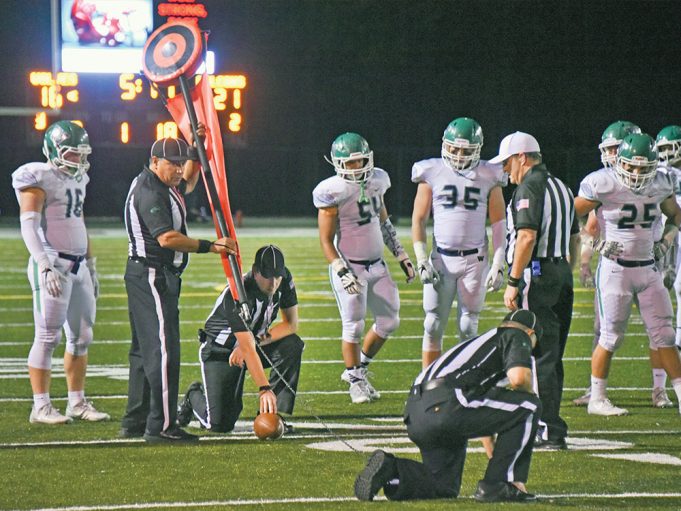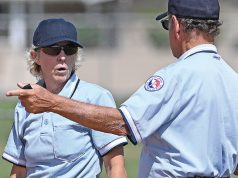If you put 30 sports officials in a room, regardless of the sport, and watch a tight play on video, what happens during the dissection of the action afterward? A big argument, right? Some people think it was a checked swing. A bunch of others will think the batter followed through and the umpire should’ve called a strike. Roughly half will be adamant about pass interference while the others think it was just good defense.
We are trained to get our rulings correct. We study the rules, learn complex situations, review video and get feedback from clinicians at camps. All that work doesn’t ensure perfection. Nor does it ensure we’ll always be on the same page as our partners or that reasonable people can’t disagree on a specific play.
At the same time, there is this presumption in almost all sports that there is only one correct ruling for a specific play. You are either right or wrong. That’s not true. Given the complexity of factors and the speed with which players run, balls are thrown and bodies clash, we can’t presume that certain movements or contact can always be ruled one way or another. Sometimes the play is a 50-50 call and we should remember that.
Take baseball, for example. Umpires know the strike zone. The pitcher has to hit a small area. If he’s just off slightly, it won’t be a strike.
But there are edges to the plate. The ball is thrown at speeds up to 100 miles per hour. Balls curve and sink. Every umpire knows and recognizes those factors, yet we still expect his right arm to go up consistently only if certain parameters of the strike zone are met.
What about the ball that ever-so-slightly shaves the corner? Or the ball at 98 mph that appears to cut across the corner? Did the umpire see it? Did he see it perfectly? If not, he may see it one way, his field partner may see it differently and a camera catching the ball’s movement played back in slow motion may support one or the other or identify it as a 50-50 ruling.
We should stop beating ourselves up under the presumption that one ruling applies to all plays. There’s no question that many, if not most, of our rulings are clear cut and should only yield one decision.
There are also times where the judgment is fuzzy and you can go either way. Holding by the offensive line in football certainly fits the category. You can study the rules for decades, but when you head onto the field, there’s so much action and the bodies are gigantic, so you can’t see everything at all times. When you do, even with a great angle, you may not see a hand grabbing or a jersey being yanked. What looks like a significant tug to you may be a light pull to one of your crewmates. There’s judgment involved and you’re expected to decide quickly whether to throw a flag or not. Hindsight from video may clarify that the ruling should have gone one way or the other, but on the field it was 50-50.
Keep in mind when you officiate that you won’t always get 100 percent agreement with your partner(s), nor should you expect to on certain plays. Some are 50-50, and we should leave it at that.
What's Your Call? Leave a Comment:
Note: This article is archival in nature. Rules, interpretations, mechanics, philosophies and other information may or may not be correct for the current year.
This article is the copyright of ©Referee Enterprises, Inc., and may not be republished in whole or in part online, in print or in any capacity without expressed written permission from Referee. The article is made available for educational use by individuals.


















